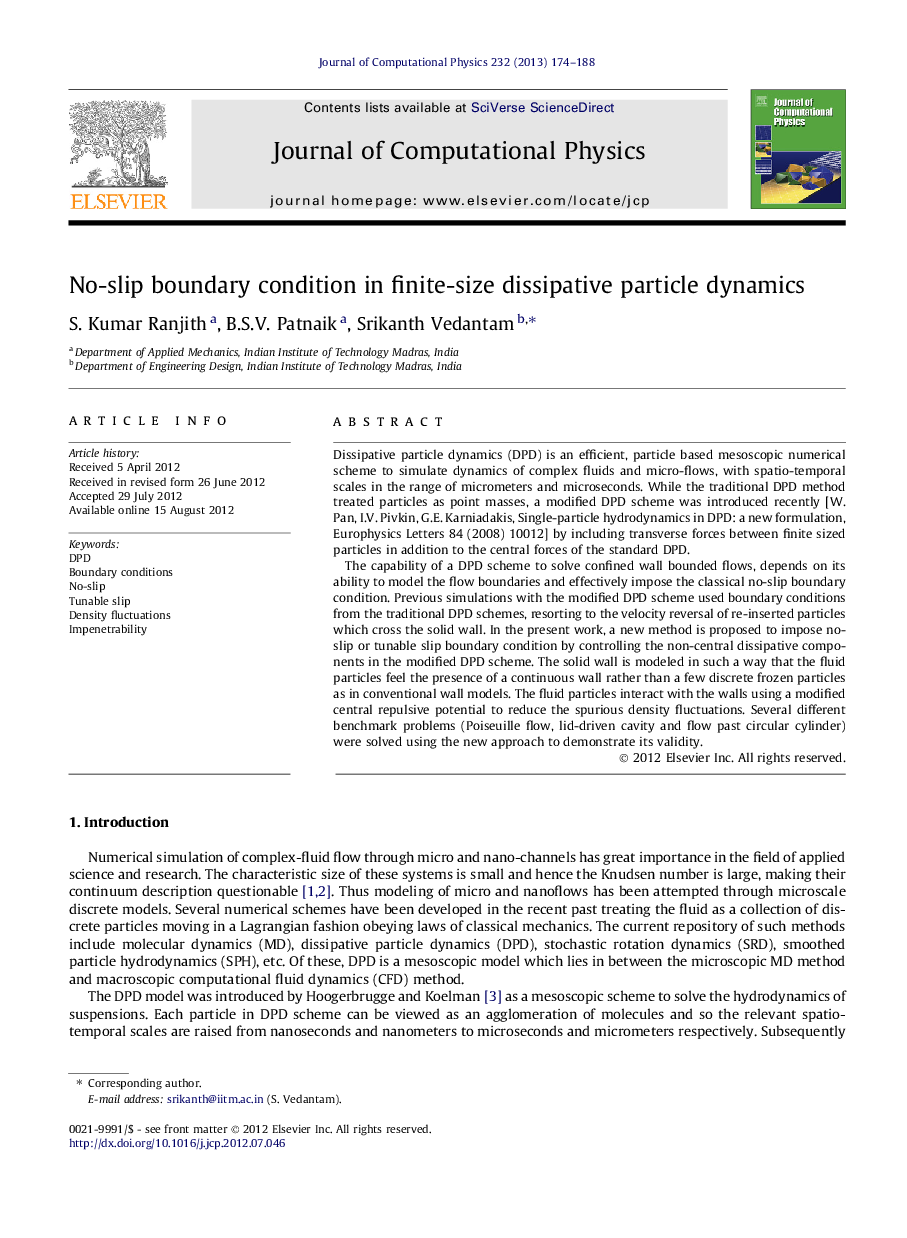| Article ID | Journal | Published Year | Pages | File Type |
|---|---|---|---|---|
| 521699 | Journal of Computational Physics | 2013 | 15 Pages |
Dissipative particle dynamics (DPD) is an efficient, particle based mesoscopic numerical scheme to simulate dynamics of complex fluids and micro-flows, with spatio-temporal scales in the range of micrometers and microseconds. While the traditional DPD method treated particles as point masses, a modified DPD scheme was introduced recently [W. Pan, I.V. Pivkin, G.E. Karniadakis, Single-particle hydrodynamics in DPD: a new formulation, Europhysics Letters 84 (2008) 10012] by including transverse forces between finite sized particles in addition to the central forces of the standard DPD.The capability of a DPD scheme to solve confined wall bounded flows, depends on its ability to model the flow boundaries and effectively impose the classical no-slip boundary condition. Previous simulations with the modified DPD scheme used boundary conditions from the traditional DPD schemes, resorting to the velocity reversal of re-inserted particles which cross the solid wall. In the present work, a new method is proposed to impose no-slip or tunable slip boundary condition by controlling the non-central dissipative components in the modified DPD scheme. The solid wall is modeled in such a way that the fluid particles feel the presence of a continuous wall rather than a few discrete frozen particles as in conventional wall models. The fluid particles interact with the walls using a modified central repulsive potential to reduce the spurious density fluctuations. Several different benchmark problems (Poiseuille flow, lid-driven cavity and flow past circular cylinder) were solved using the new approach to demonstrate its validity.
